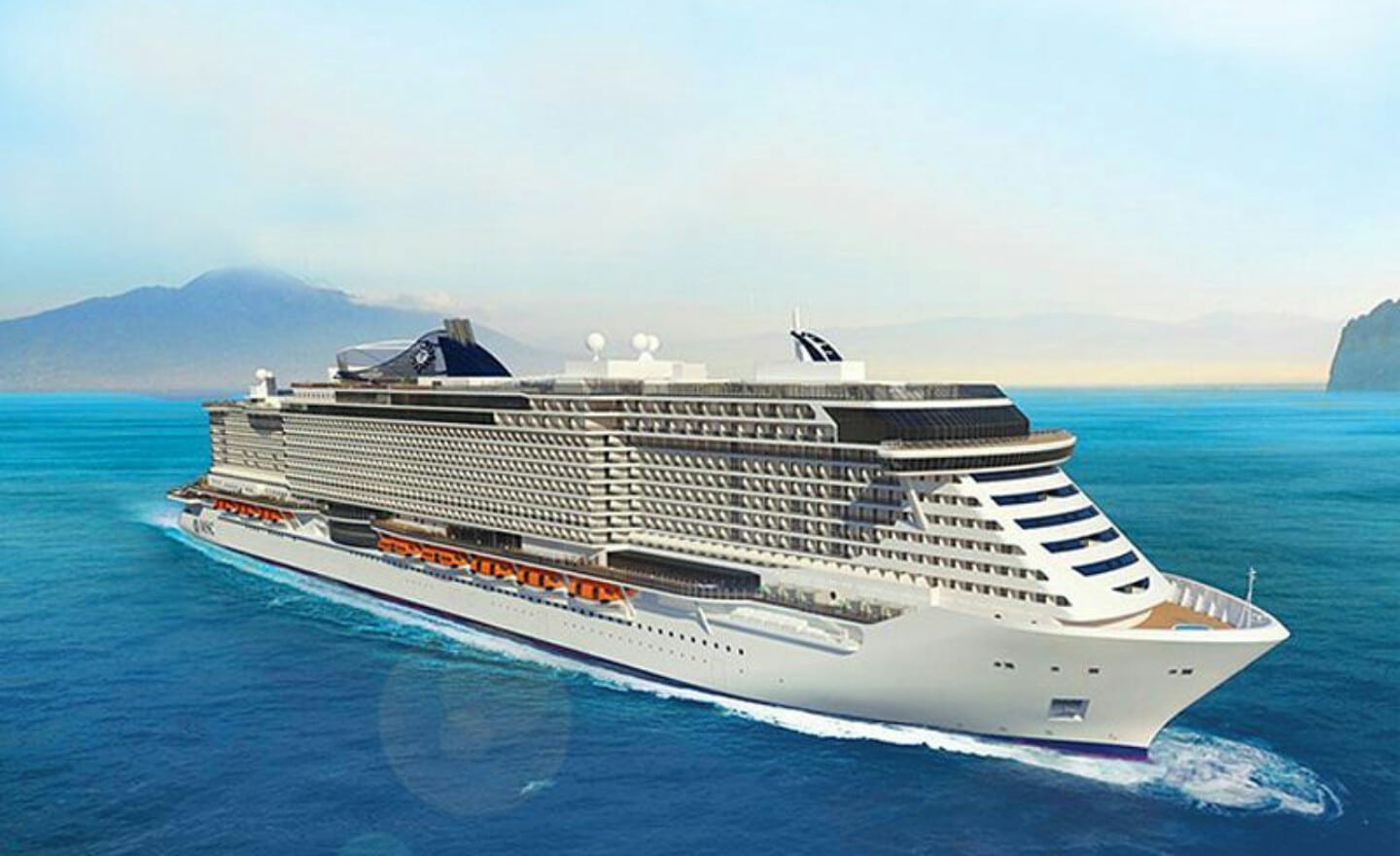[vc_row njt-role=”people-in-the-roles” njt-role-user-roles=”administrator,armember”][vc_column][vc_column_text]
The tourism and luxury cruise industries are some of the most heavily impacted by the global coronavirus crisis. Cruise ships, true hotels on the water, will have to face tomorrow new and unusual challenges in terms of health and safety. The objective is to reinvent themselves so that they are not turned away from the ports where they find refuge.
The luxury cruise industry has been growing increasingly in recent years, with the number of cruise passengers around the world constantly on the rise: from 13 million in 2004, it rose to 19 million in 2010 and then to 30 million in 2020. According to the Cruise Lines International Association (CLIA), the economic impact of this activity in 2018 amounted $150 billion for a total of nearly 1.2 million direct and induced jobs.
But all this was before an epidemic known as SARS-CoV-2 spread around the world.
Yesterday successful, today crippled, the cruise industry is facing the biggest crisis in its history.
Its recovery will depend on its ability to meet multiple health challenges, but above all to overcome many social and economic upheavals.
Reinforcement of health standards on board
The cruise market is going to have to significantly strengthen onboard health safety processes.
This has already been undertaken by the high-end Asian company Genting Cruise Lines (GCL), which has just announced a series of new precautionary measures and protocols for its Dream Cruises and Star Cruises ships: increased cleaning of all public areas, leisure areas and cabins with a high level of disinfectants and other aerosols, temperature checks for passengers before boarding and disembarking, signing of health declarations for the most vulnerable, infrared fever screening system, etc.
“All Genting Cruise Lines ships have 100% filtered and supplied fresh outdoor air in each passenger cabin and public areas on board, ensuring a constant flow of fresh and healthy air in all ships. In addition, isolated rooms are available in the medical centre and the cabins can be converted into quarantine rooms if required” says Kent Zhu, President of GCL.
In the future, there are also strong plans to extend the use of masks for passengers – to prevent promiscuity – as well as for staff and crew members in direct contact with customers.
Strict rules to which passengers will have to submit at the risk of being refused access on board.
Extensive disinfection and sanitation measures to which all cruise companies will also have to adhere in order to avoid sinking at some point in the future, especially when it is known that cruise ships are enclosed spaces and constitute environments conducive to the transmission of a virus from one person to another.
Therefore, in order to avoid contamination, a social distance of at least one metre between each person will most likely be practised on board ships, whether in places of entertainment, swimming pools, children’s clubs and even while passengers are waiting in queues for embarkation and disembarkation.
A social distance that will also surely put an end to self-service services such as buffets.
New measures that are sure to shake the cruise industry to its core.
Reinventing itself so as not to be shipwrecked?
The implementation of new rules and standards is likely to profoundly disrupt the cruise industry and even threaten its very existence.
The particularly complex management of certain ships will force large cruise ships to rethink embarkation and disembarkation procedures for thousands of passengers.
Cleaning operations, new filters and the segregation of networks to provide 100% fresh air in cabins will impose huge additional costs and will be particularly difficult to implement for older ships.
Cruise shipping, which by definition is a globalised activity, will also have to overcome the difficulties linked to travel restrictions and the closure of certain borders.
These are all pitfalls that are giving the cruise ship industry a hard time and forcing it to question its economic model.
Offering cruises at very low prices or even cancelling the policy of maximum occupancy on board are all growth levers that are being considered to attract future cruise ship customers.
These reconfigurations could, however, have serious economic consequences: a pure and simple reduction in revenue for shipowners, whereas the financial situation is already very complicated for them in the current context.
On board the luxury cruise ship MSC Seaview, where the coronavirus appeared three weeks ago, the situation is alarming. The crew members’ contracts had to be frozen because of the economic difficulties linked to the virus and salaries could not be paid.
The promise of chic and comfortable luxury cruises now seems more than ever to be in trouble, as in the huge Diamond Princess boat, where dreams of freedom – the slogan “Wake up every morning preparing for new horizons. Enjoy the unique view from the 750 or so cabins with balconies” – as the brochure states – has turned into a nightmare.
The future of these truly high-end floating hotels, but also the future of the luxury cruise market and tourism in general, remains very uncertain to this day.
Read also > Dubaï : luxury, a key sector of the economy under threat
Featured photo : © MSC Seaview cruise / Facebook
[/vc_column_text][/vc_column][/vc_row][vc_row njt-role=”not-logged-in”][vc_column][vc_column_text]
The tourism and luxury cruise industries are some of the most heavily impacted by the global coronavirus crisis. Cruise ships, true hotels on the water, will have to face tomorrow new and unusual challenges in terms of health and safety. The objective is to reinvent themselves so that they are not turned away from the ports where they find refuge.
The luxury cruise industry has been growing increasingly in recent years, with the number of cruise passengers around the world constantly on the rise: from 13 million in 2004, it rose to 19 million in 2010 and then to 30 million in 2020. According to the Cruise Lines International Association (CLIA), the economic impact of this activity in 2018 amounted $150 billion for a total of nearly 1.2 million direct and induced jobs.
But all this was before an epidemic known as SARS-CoV-2 spread around the world.
Yesterday successful, today crippled, the cruise industry is facing the biggest crisis in its history.
Its recovery will depend on its ability to meet multiple health challenges, but above all to overcome many social and economic upheavals.[/vc_column_text][vc_cta h2=”This article is for subscribers only.” h2_font_container=”font_size:16″ h2_use_theme_fonts=”yes” h4=”Subscribe now!” h4_font_container=”font_size:32|line_height:bas” h4_use_theme_fonts=”yes” txt_align=”center” color=”black” add_button=”right” btn_title=”I SUBSCRIBE!” btn_color=”danger” btn_size=”lg” btn_align=”center” use_custom_fonts_h2=”true” use_custom_fonts_h4=”true” btn_button_block=”true” btn_custom_onclick=”true” btn_link=”url:https%3A%2F%2Ftest2023.luxus-plus.com%2Fen%2Fabonnements-et-newsletter-2%2F|||”]Unlimited access to all the articles and live a new reading experience, preview contents, exclusive newsletters…
Already have an account? Log in.
[/vc_cta][vc_column_text]Featured photo : © MSC Seaview cruise / Facebook[/vc_column_text][/vc_column][/vc_row][vc_row njt-role=”people-in-the-roles” njt-role-user-roles=”customer”][vc_column][vc_column_text]
The tourism and luxury cruise industries are some of the most heavily impacted by the global coronavirus crisis. Cruise ships, true hotels on the water, will have to face tomorrow new and unusual challenges in terms of health and safety. The objective is to reinvent themselves so that they are not turned away from the ports where they find refuge.
The luxury cruise industry has been growing increasingly in recent years, with the number of cruise passengers around the world constantly on the rise: from 13 million in 2004, it rose to 19 million in 2010 and then to 30 million in 2020. According to the Cruise Lines International Association (CLIA), the economic impact of this activity in 2018 amounted $150 billion for a total of nearly 1.2 million direct and induced jobs.
But all this was before an epidemic known as SARS-CoV-2 spread around the world.
Yesterday successful, today crippled, the cruise industry is facing the biggest crisis in its history.
Its recovery will depend on its ability to meet multiple health challenges, but above all to overcome many social and economic upheavals.[/vc_column_text][vc_cta h2=”This article is for subscribers only.” h2_font_container=”font_size:16″ h2_use_theme_fonts=”yes” h4=”Subscribe now!” h4_font_container=”font_size:32|line_height:bas” h4_use_theme_fonts=”yes” txt_align=”center” color=”black” add_button=”right” btn_title=”I SUBSCRIBE!” btn_color=”danger” btn_size=”lg” btn_align=”center” use_custom_fonts_h2=”true” use_custom_fonts_h4=”true” btn_button_block=”true” btn_custom_onclick=”true” btn_link=”url:https%3A%2F%2Ftest2023.luxus-plus.com%2Fen%2Fabonnements-et-newsletter-2%2F|||”]Unlimited access to all the articles and live a new reading experience, preview contents, exclusive newsletters…
Already have an account? Log in.
[/vc_cta][vc_column_text]Featured photo : © MSC Seaview cruise / Facebook[/vc_column_text][/vc_column][/vc_row]








